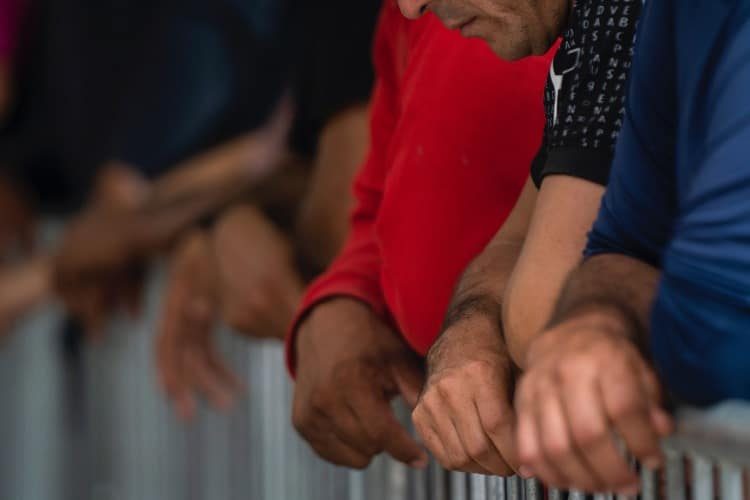
The Biden administration’s announcement that the Covid-19 public health crisis designation will end on Thursday, May 11 also means that the use of Title 42 to streamline the expulsion of illegal immigrants will end on that date. As a result, tens of thousands of soon-to-be illegal immigrants have surged to the U.S.-Mexico border, hoping that once they cross into the U.S., they will find it easy to stay.
While Title 42 has become almost synonymous with border enforcement, it is actually the section of the Public Health Service Act of 1944 that empowers the United States government to stop immigration from some countries to prevent the spread of disease. As part of the overreaction to Covid-19 in 2020, President Trump used Title 42 to begin immediate expulsion of those who illegally cross the border from Mexico. This application of Title 42 meant the process could be streamlined, since there was no obligation to consider illegal immigrants for asylum.
And while President Biden blasted Trump’s use of Title 42, he found that he was unable to end it while still milking Covid-19 for all he could. But with Biden having exhausted all excuse and pretense for maintaining the public health crisis designation three years after the “pandemic,” he is finally lifting it. And with the end of that designation, Title 42 can no longer be used to protect our southern border.
So, states along the U.S.-Mexico border are bracing for a literal invasion en masse of illegal immigrants. As Fox News reports:
Tens of thousands of migrants are reportedly surging at the U.S.-Mexico border ahead of Title 42’s expiration.
In the Texas border city of El Paso, about 2,200 migrants are currently camped or living on the streets a few blocks from major ports of entry that connect El Paso with the Mexican city of Juárez. The city is prepared to open up shelters next week if needed at two vacant school buildings and a civic center.
In a Facebook post Sunday, the city of El Paso said streetcar service is suspended until further notice, pointing to “service changes necessary for public safety and a road closure needed to accommodate the City’s response to the humanitarian migrant crisis issue impacting downtown City services.”
And:
El Paso Mayor Oscar Leeser estimated that roughly 10,000 to 12,000 migrants are in Juárez waiting to cross, as local officials prepare for the “unknown.” Leeser said migrants are flocking to the border under what he said is the false assumption that it will be easier to gain entry to the U.S. when Title 42 goes away.
It is noteworthy that Mayor Leeser considers it a “false assumption” that it will be easier to illegally enter the United States once Title 42 restrictions are lifted. The truth is that it is already easy to illegally cross the border. The real question is about the difficulty of staying in the United States after entering illegally. As NBC News reports:
While border officers can expel people from the country more quickly under Title 42 because they can dispense with the asylum process, migrants aren’t assessed penalties they would now face under Title 8: Among them is up to two years in prison if a person re-enters the country illegally after having been removed or deported.
Without those consequences, Mexican migrants and others have been using Title 42 “as a means to get multiple opportunities to enter the United States,” said Ariel Ruiz Soto, a policy analyst at the Migration Policy Institute, a think tank. “That is counterproductive, because it in some ways incentivizes migrants to try multiple times, and the more times that migrants try, the more likely that they’re successful.”
And as The New York Times states:
Once border officials can no longer use Title 42 to immediately expel migrants, they will resort to the usual laws for handling illegal border crossings, which takes longer, in part, because that allows migrants to ask for asylum. This prolonged administrative processing will lead to migrants staying in holding facilities longer. Once those facilities reach maximum capacity, it becomes more likely that people will suffer inhumane conditions as they crowd under bridges and outside shelters.
So, while Title 42 was a tool for attempted management of an unmanageable illegal-immigration problem, two things should be noted: First, it was not the only tool, and second, it had its own problems. The Cato Institute addresses some of those problems by looking at the actual numbers:
Title 42 is a policy largely targeting single adults from Mexico and the Northern Triangle, but the number of single adults from these four countries has quadrupled alongside the increased use of Title 42 — from an average of about 21,000 per month to nearly 80,000 per month in 2021 and 2022. Much of this increase preceded the rise in other arrests in 2020.
And:
Title 42 does not deter single adults from Mexico and the Northern Triangle from crossing the border. Further evidence is that Title 42 has led to significant increase in recidivism — that is, the share of immigrants who were previously arrested the same year. The recidivism rate surged from about 20 percent in 2019 to 49 percent in 2022 — meaning nearly half of single adults arrested under Title 42 from Mexico and the Northern Triangle were previously arrested under this policy. The remain in Mexico policy — which also involved sending people back to Mexico — also led to an increase in recidivism prior to the Title 42 policy.
Illegal immigration has been a major problem for decades and while Title 42 streamlined the process of deportation, it sped up the revolving door. House Majority Leader Representative Steve Scalise (R-La.) was on Fox News to promote a bill he and fellow Republicans have introduced to address the problems with illegal immigration. He said that real border enforcement is the only immigration policy that will work. He called out Secretary of Homeland Security Alejandro Mayorkas, saying, “Secretary Mayorkas has paid lip-service, telling everybody the border’s not open — of course, everybody knows the border’s open.” Scalise went on to say that the points in the immigration bill Republicans have introduced “are things that President Biden could do today — end catch and release, give our Border Patrol agents more tools to actually secure the border, not to process people coming in illegally, reinstate the remain in Mexico protocol.”
The end of Title 42 is not the end of border enforcement, but it should serve as a starting place for actually beginning to secure our southern border. Because with or without Title 42, the United States has immigration laws in place and those laws can — and must — be enforced.
Instead, tens of thousands of soon-to-be illegal border-crossers are camped out waiting to take advantage of weak border-enforcement policies under a weak president. And cities such as El Paso are bracing to be overrun.




